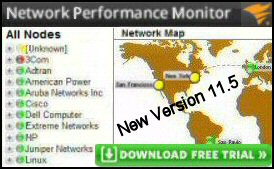A List of PowerShell Commands for Exchange 2010
There are two difficulties when you try to change settings via the built-in Exchange 2010 console.
Firstly there can be confusion from too many drilldowns before you reach the target menu. Secondly, some settings are just not available in the GUI, thus you need to execute a PowerShell command.
Topics for Exchange 2010 PowerShell Commands
- PowerShell Basics
- Research PowerShell’s Exchange Cmdlets
- PowerShell Exchange AddressList Cmdlets
- PowerShell Exchange Mailbox Cmdlets
- List of PowerShell Cmdlets for Exchange 2010
♠
Simple PowerShell Example – Exchange Server Roles
The purpose of this simple illustration is to list all the roles of an Exchange Server. Observe the simplicity of PowerShell’s two-part instruction, the verb ‘Get’ coupled to the noun ‘ExchangeServer’.
# Example: PowerShell Exchange 2010 Command
Get-ExchangeServer
Note 1: You could append -status to the above command.
Another Simple PowerShell Command
#Exchange 2010 PowerShell Script
Get-Mailbox -Identity YourPerson
Note 2: You can also try the format: domain\user instead of ‘YourPerson’.
Research PowerShell’s Exchange Cmdlets
Use PowerShell’s own Get-Command to list all cmdlets containing ‘Exchange’.
# PowerShell cmdlets containing Exchange
Get-Command *Exchange*
Note 3: Actually, *Exchange* doesn’t unearth many cmdlets, thus you could substitute *Mail* or *Address* in the above example.
Discover Parameters for Your Exchange 2010 Command
Once you find a particular cmdlet that interests you, the next step is to see if it has any useful parameters. Again use PowerShell’s own Get-Help cmdlet.
# Parameters for Exchange 2010 PowerShell Commands
Get-Help Get-ExchangeServer -full
Note 4: I always append -full because I like to see Microsoft’s PowerShell examples. Incidentally, this is how I knew there was a parameter called -status.
See more examples of using simple PowerShell commands for Exchange Server.
Guy Recommends: A Free Trial of the Network Performance Monitor (NPM) v11.5
v11.5
SolarWinds’ Network Performance Monitor will help you discover what’s happening on your network. This utility will also guide you through troubleshooting; the dashboard will indicate whether the root cause is a broken link, faulty equipment or resource overload.
What I like best is the way NPM suggests solutions to network problems. Its also has the ability to monitor the health of individual VMware virtual machines. If you are interested in troubleshooting, and creating network maps, then I recommend that you try NPM now.
Download a free trial of SolarWinds’ Network Performance Monitor
PowerShell Exchange 2010 AddressList Cmdlets
I have included some of the many PowerShell Exchange 2010 cmdlets, here are the three most important nouns for investigating Exchange address lists.
- AddressList
- GlobalAddressList
- AddressListPaging
Combine with these PowerShell verbs: Get, Set, New and Remove, for example,
- New-AddressList
- Get-AddressListPaging
- Set-GlobalAddressList
®

